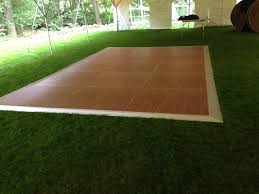Enhancing Ingenuity Through Hue Principles in Illuminated Dance Surface Creations
Enhancing Ingenuity Through Hue Principles in Illuminated Dance Surface Creations
Blog Article
Hue concept is an crucial element of design, especially when it relates to creating LED dancing surfaces. The interplay of colors can greatly affect the mood and energy of a venue. By understanding how hues function together, designers can craft an ambiance that improves the total experience for dancers. This piece examines the fundamentals of hue principles and its application in LED dance floor layouts.
The main colors are red, blue, and golden. These colors cannot be made by mixing other hues together. Intermediate colors, such as emerald, tangerine, and violet, are formed by combining primary hues. Third-level colors are formed by mixing a primary hue with a intermediate hue. Grasping these fundamental connections helps designers select colors that complement one another and create a visually pleasing show. Combining these colors on an light-emitting diode dancing floor can result to vibrant and stimulating outcomes that attract the focus of participants.
Color value also plays a crucial role in design. Colors can be categorized as warm or chill. Warm hues, such as red, orange, and yellow, often to elicit emotions of excitement and warmth. In contrast, chill hues like blue, green, and purple typically generate a serene and tranquil atmosphere. Designers can utilize these color temperatures to set the ambiance for various kinds of occasions. For instance, a party atmosphere may gain from warm hues that invigorate the audience, while a more relaxed occasion might employ chill hues to offer a calming effect.
In addition to color combinations and temperature, luminosity and intensity are vital factors to consider. Luminosity denotes to dance floor rental for community gatherings how light or dim a hue appears, while saturation indicates the vividness of a color. Bright, intense colors can generate a lively and lively environment, perfect for dancing surfaces. On the contrary hand, gentler, less intense hues can create a more muted environment. By adjusting brightness and saturation, designers can draw attention to specific areas of the dancing surface or create visual routes, leading dancers through the space.
Ultimately, it is crucial to right here take into account the psychological impacts of hue in LED dancing surface designs. Various hues can elicit various feelings and responses. For example, crimson is frequently associated with passion and vitality, while azure can be soothing and peaceful. Grasping these connections allows designers to tactically apply colors to influence the actions of participants. By integrating hue theory into LED dancing surface layouts, creators can enhance the overall experience, making it unforgettable and enjoyable for everyone involved.